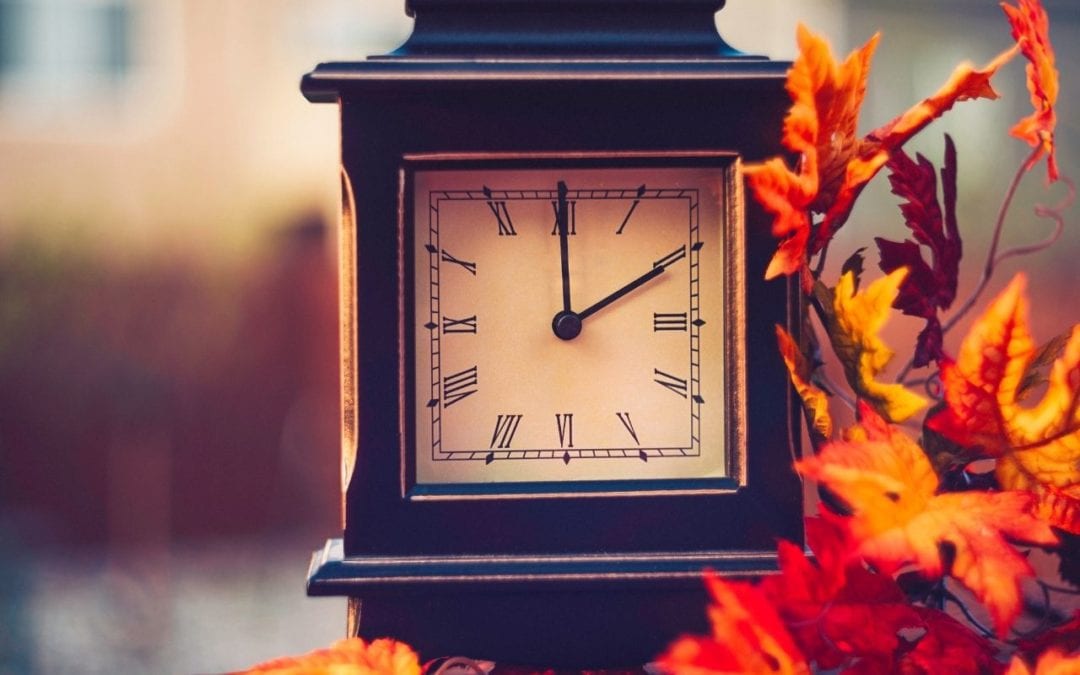Dogs typically need to use the potty first thing in their morning, and if they’re accustomed to heading out at a certain time, they expect to relieve themselves then. With Daylight Savings, your dog may be confused why you aren’t waking up to take them out, or why you’re waking them up early for their morning bathroom time. And, as the saying goes, “when you’ve got to go, you’ve got to go,” so you just may find a whimpering dog or an unwanted morning surprise on your rug if you don’t prepare ahead.
Just like you, your pooch typically eats around the same times throughout the day, especially since you’re the one providing him the food. If you’re off an hour on feeding, you very well could find your sweet dog behaving differently like chewing your favorite shoe or knocking over the kitchen trash scrounging for leftovers. Just think about how your mood may change if you’re hungry and don’t have access to food!
Your dog’s behaviors may similarly change if you’re conditioned to coming home from work at a specific time. Your dog is just like any other family member that misses you during the day. Some dogs even await their dog parents at the door or watch for him/her in the windowsill. Even an hour off from attention time may give him anxiety and lead to destructive behaviors like chewing objects or potty accidents.
So, is there a way to prepare your beloved pooch for Daylight Savings Time? Yes, and it’s important that you think ahead to prevent unnecessary stress for your furry friend! Some of the best practices require you to be proactive. First, know when Daylight Savings Time is coming up on the calendar and work back from there. To adjust your dog’s sleep patterns, you can start training him a couple of weeks ahead of time by waking him up a couple of minutes early each day. This will allow your dog’s circadian rhythm to gradually change and adjust to your new wake up time. Your dog will appreciate this more than him having to hold it for as long as he can or being forced to relieve himself on your floors. Your dog doesn’t want to disappoint you any more than you want to be disappointed!
You can do the same to prepare your canine friend for different eating times. Do you find your dog patiently waiting at his feeding place at specific times during the day? This is his circadian rhythm telling his stomach “it’s time to eat.” So, again, start earlier than Daylight Savings and adjust your pup’s eating times by a couple of minutes each day. By doing this, your dog won’t feel confused and aggravated, and feel like he needs to beg for food.
Likewise, in order to adjust your expected welcome home time from your pet, come home a few of minutes later over the course of a couple weeks. Gradually transitioning the time will lessen your pet’s anxiety of wondering where you are. Consider it a couple of bonus minutes to run a quick errand!
Don’t forget to have other family members on board with the preparation plan, including any dog walker or pet sitter.
As in any transition for your pet, it’s important to ease their anxiety and avoid unnecessary change in his behavior due to the change in your own schedule. When you notice Daylight Savings coming up on your calendar, think ahead and give your beloved pet a little extra attention. Absorb the extra cuddle time and you can enjoy your extra hour of sleep without having to worry about hopping out of bed. You can also provide a distraction like a new toy to help adjust their body clock. So, get started on your preparation and don’t forget to turn your clocks back on November 1st!

